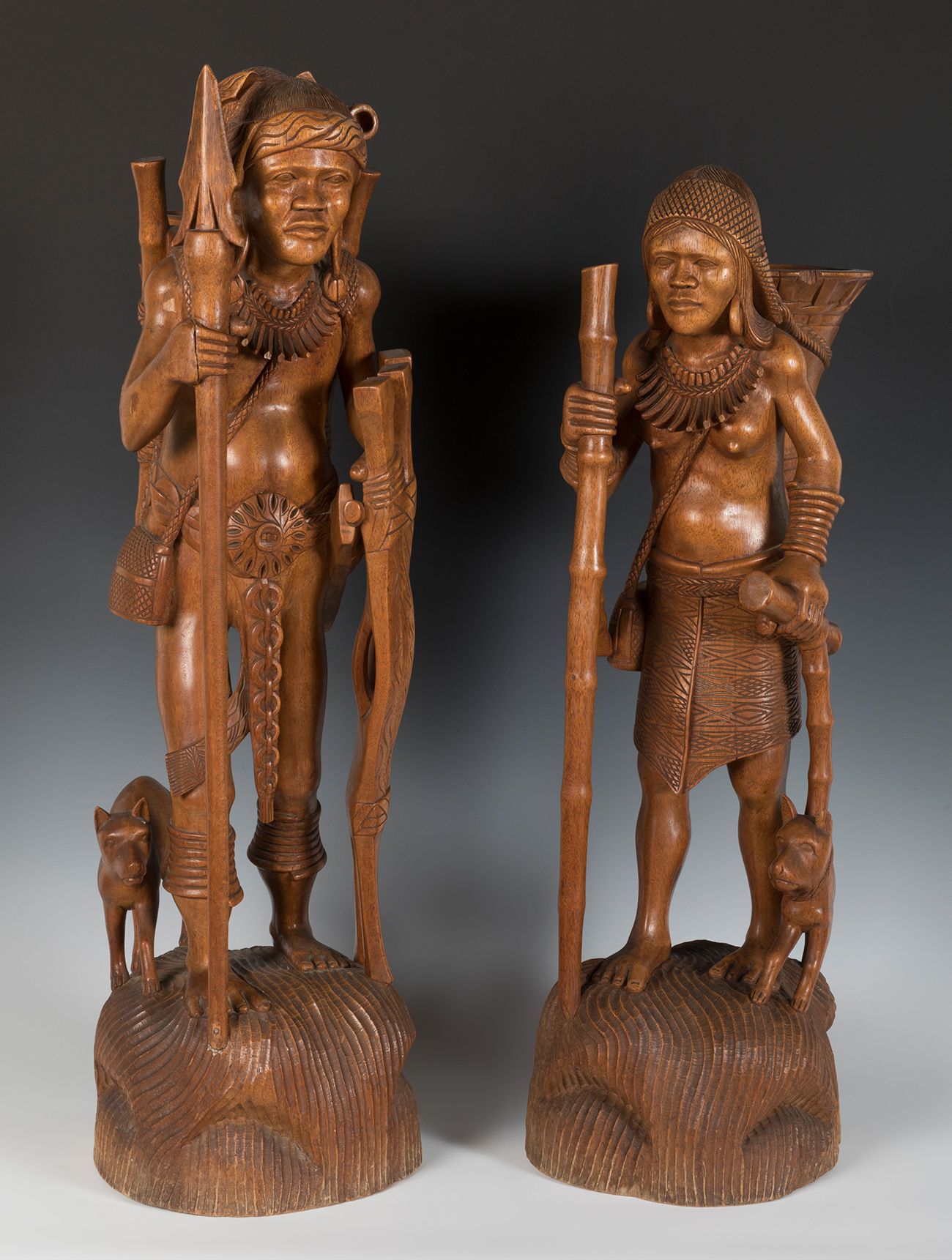Description
Peasant couple. Philippines, mid-20th century. Carved wood. Stamps on the reverse. Restorations on one of the sculptures. Measurements: 79 x 22 x 23 cm. height, the largest. Couple of sculptures carved in wood, in round bulk. They represent a couple of peasants accompanied by small dogs. The attire has been described in detail: scarves, tribal necklaces, earrings that elongate the ovals of the ears, ribbons that hold the baskets on their backs, etc. The features of the figures are also described in great detail. The features of the figures are also highly expressive. These costumbrista works developed in the Philippines in parallel to the official Christian imagery brought from the Western metropolis. During the 19th and early 20th century, costumbrismo was an artistic trend that achieved great recognition. In the case of Filipino artists, this theme was of great importance, as the Spanish colonists were largely unfamiliar with both their people and their customs. Since they had had to follow imported models for centuries, in the early years of the 19th century, at the time of the independence and political opening of some of the colonies, several artists began to represent a new model of painting and sculpture with their own identity.
63
Peasant couple. Philippines, mid-20th century. Carved wood. Stamps on the reverse. Restorations on one of the sculptures. Measurements: 79 x 22 x 23 cm. height, the largest. Couple of sculptures carved in wood, in round bulk. They represent a couple of peasants accompanied by small dogs. The attire has been described in detail: scarves, tribal necklaces, earrings that elongate the ovals of the ears, ribbons that hold the baskets on their backs, etc. The features of the figures are also described in great detail. The features of the figures are also highly expressive. These costumbrista works developed in the Philippines in parallel to the official Christian imagery brought from the Western metropolis. During the 19th and early 20th century, costumbrismo was an artistic trend that achieved great recognition. In the case of Filipino artists, this theme was of great importance, as the Spanish colonists were largely unfamiliar with both their people and their customs. Since they had had to follow imported models for centuries, in the early years of the 19th century, at the time of the independence and political opening of some of the colonies, several artists began to represent a new model of painting and sculpture with their own identity.
